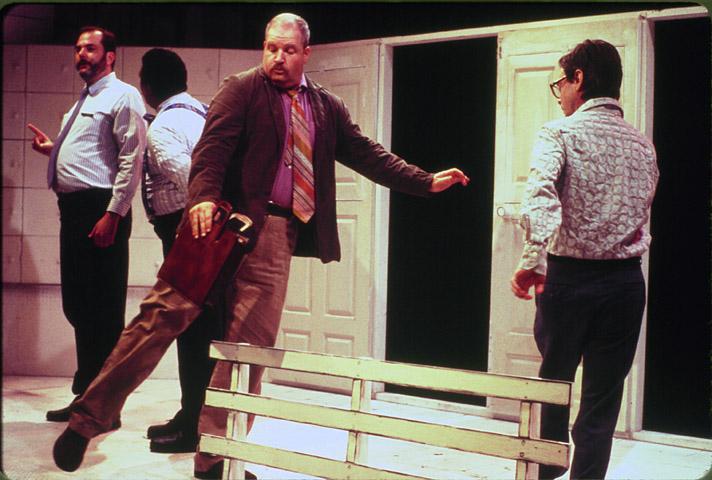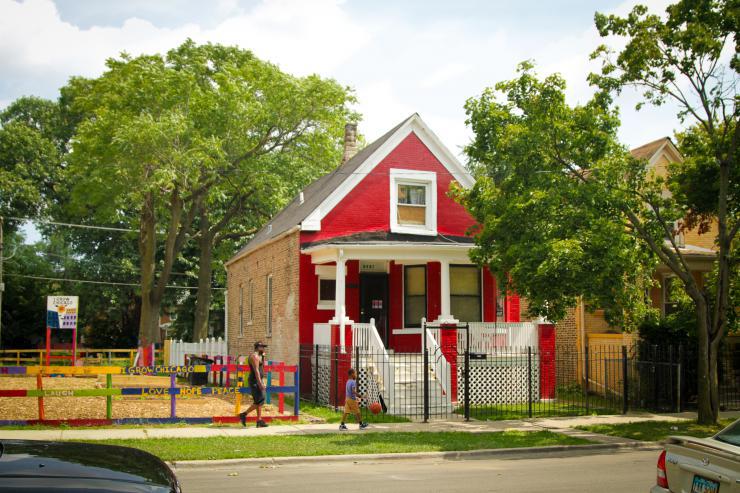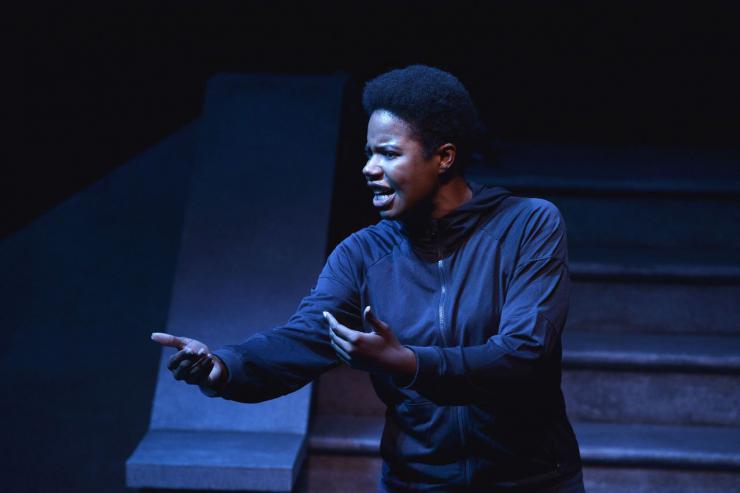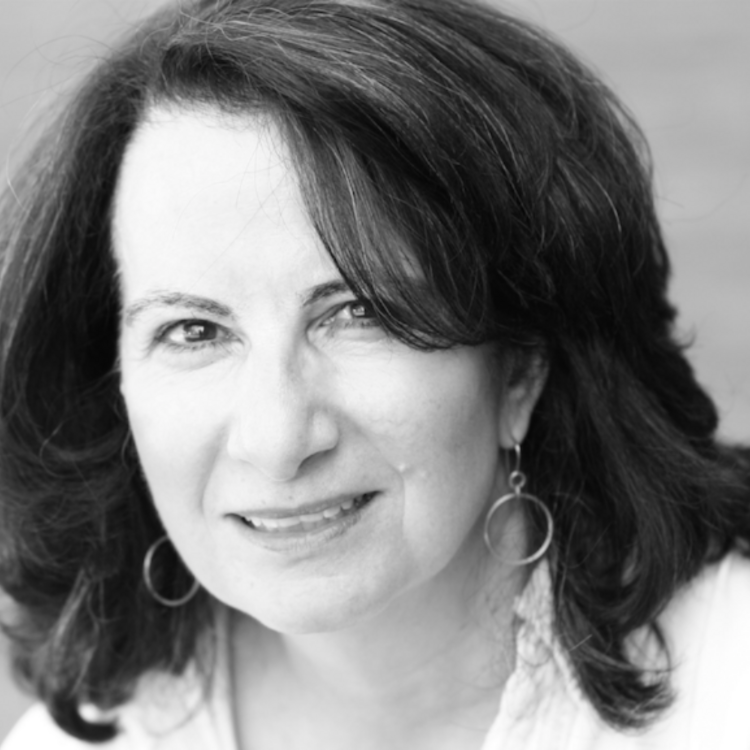2015 Essays in Review
The Most-Shared Articles
This week, the HowlRound editors are sharing the most-read and most-commented on pieces from our sections, as well as the articles that have stuck with us the most. Here, Lynette writes about five of the most-shared essay posts. Be sure to check out the most-commented on NewCrit and Blogs.
Racial and Ethnic Diversity in Arts Management: An Exposé and a Guide by Elena Muslar
“Committing to diversity in arts organizations is not about checking off a box, filling up a diversity quota, or reaching out to the few people of color that you know. It is about establishing an organizational commitment to diversity advancement.”
A young voice with an important perspective on promoting systemic change in performing arts organizations through racial and ethnic diversity management and engagement.
Are Theatre Artists Hardwired? by Scott T. Barsotti
“[A]rtists who gravitate toward certain specialties are often driven by more than just creative ambition and personal interest. In many cases, they may be following a path that’s more biological than it is deliberate.”
Born to be a theatre artist. An article that theatre artists quoted to families and parents to justify their inevitable career paths.
The Role of Storytelling in the Theatre of the Twenty-First Century by Anne Bogart
“What do we have if it’s not a blank page? I would propose that what we have is a rumbling graveyard. Our job in the theatre is to give voice to dead people. There are people who didn’t finish their sentences, people who didn’t have a chance. Our job is to listen to what’s before us, so that the page is not blank. “
Anne Bogart articulates my own particular aesthetic.
How PC Is Too PC? A look at trigger warnings and audience overprotection in Little Black Dress INK’s 2014 ONSTAGE Festival by Tiffany Antone
“Instead of censoring or sanitizing content that ‘might offend,’ theatres should look at such works as opportunities to engage their audiences in critical public discourse about important issues in the play.”
Another important discussion. Art is a trigger warning.
Native Voices On the American Stage: A Constitutional Crisis by Mary Kathryn Nagle
What does it mean when, in twenty-first century America, the United States Supreme Court still classifies your people as “racially inferior?”
It means you have to tell your story. Stories and performances were constructed to allow the Court to conclude we are “racially inferior”—stories that continue to find their way to the American stage today. The only way to deconstruct a falsely fabricated prejudicial story is to tell a real one.
From HowlRound’s series on Native Voices. Just one example of a compelling peer-curated series on HowlRound.
Editor’s Picks:
Forty Years of Avant-Garde by Paul Zimet

“In Talking Band, we made music intrinsic to the work. The music was not necessarily sung, as in opera, nor did characters burst out into song periodically in moments of high emotion or comedy, as in musicals. Rather the musical score was woven into the fabric so that all the elements—text, design, choreography—were part of the music of the production.”
Paul Zimet’s fascinating overview of avant-garde theatre from Joseph Chalkin’s Open Theatre to his own Talking Band was a perspective on a form of theatre and a time in theatre history that I didn’t know and appreciated reading about.
Marcus Gardley on An Issue of Blood and The Gospel of Lovingkindness by Rebecca Stevens

“When you talk about race in terms of economics, a strong truth arises and it’s almost too much. I think the problem is no one wants to talk about capitalism. We’d really have to deal with our shit, right? So what I am talking about is capitalism and how greed influences all sides. In some ways, greed has transcended race, but nobody wants to call greed out by its name. Racism feels like a social construct that overtime we can fix; but capitalism, how do we fix that? Fixing that will topple the country because everything’s founded on capitalism. We’re not founded on democracy and life, liberty, and the pursuit of happiness. That is not our foundation, but making a profit was.”
A long-form essay and interview that incorporated photos and a play excerpt. This was an experimental form for HowlRound and it worked really well.
Shot, Shocked, Saved by Rob Onorato

“In live performance only, we experience the effect of violence on live bodies. What must we consider, then—as artists and audiences both—when deciding to employ or experience violence in the theater?”
An essay that asks questions that I grapple with in my own work: What is our responsibility as artists, what are our complicities in reproducing violence in our work?
Long Arc Relationships: An Interview with Daniel Beaty and David Dower by Adewunmi Oke

“Everything we talk about, in terms of the why we’re doing this, lives outside of traditional measures of success. I know I’m after civic transformation: race and class equity. That’s how it’s always been and I use theatre to do it—I’m just doing that. So whatever other distractions come around…all that stuff is negotiating with reality when you’re working on something that is big. Lots of different surprises, and challenges, and shifts in our communication come up.”—David Dower
“Everything’s a story and theatremakers are storytellers. I do believe we have a responsibility for telling stories that call us to expand our humanity, to see each other more deeply, and to create a better world.” —Daniel Beaty
A fascinating conversation between two theatre practioners who share values and have a long history of working together.
In Search of a New Aesthetic by Chantal Bilodeau

“It is possible to write plays—even good plays—about climate change using the traditional narrative structure. I have seen a few, and been both moved and inspired by them. But if we want to be active participants in shaping our future, we need to move beyond writing plays about climate change to writing plays that are climate change—plays that embody, in form, content, and process, the essence of the issues we are facing. Plays where the concept of climate change is so integral to the work that the term doesn’t even need to be uttered. New problems cannot be solved with old solutions. A new consciousness requires new artistic constructs.”
Chantal Bilodeau’s suggestion that subject drives form is an idea that I have revisited several times.





Comments
The article is just the start of the conversation—we want to know what you think about this subject, too! HowlRound is a space for knowledge-sharing, and we welcome spirited, thoughtful, and on-topic dialogue. Find our full comments policy here